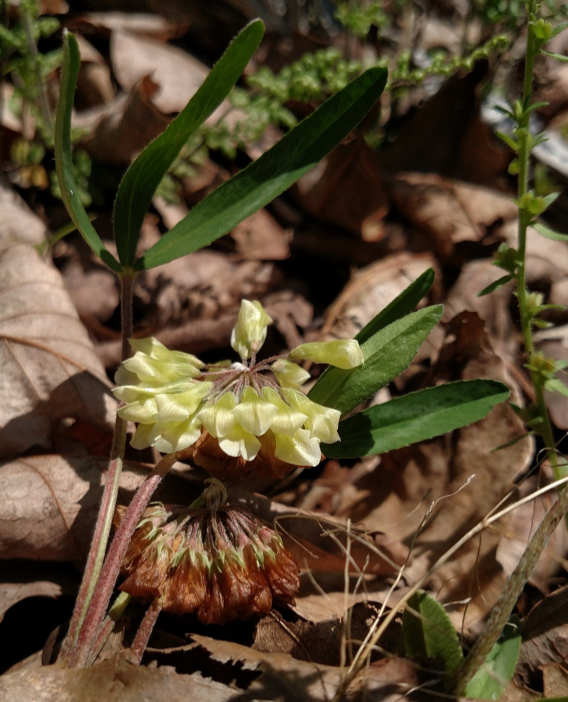
Because the C&O Canal National Historical Park hosts a variety of diverse landscapes, 219 rare, threatened, and endangered plants can be found here!
These include:
- 87 state-listed critically imperiled/highly state-rare
- 42 state-listed rare
- 54 state-listed watchlist
17 globally-acknowledge species including:
- 3 globally-imperiled
- 12 globally-vulnerable/watchlist
- 3 secure for now, but with the potential for some concern
Some of the state listed species can only be found in one place — C&O Canal National Historical Park!
The C&O Canal National Historical Park’s botanist, Rachael Renzi, gave us some details about these important plants.
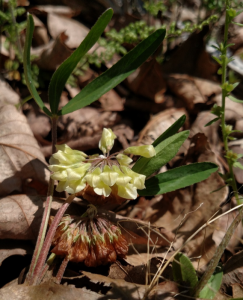
Trifolium virginicum
Trifolium virginicum, or Kate’s mountain clover, is endemic to the Central Appalachian Shale Barrens, meaning the only native range for this plant is the Appalachian barrens. Shale barrens are usually harsh environments, consisting of loose shale and little cover, contributing to a scarce understory. Kate’s mountain clover, a state-threatened species, survives in such dry, rocky conditions because it has adapted to life in the shale barrens and is considered a shale barren specialist. Some specialist features of this plant include the quick growth of a taproot, which allows for both physical stabilization and appropriation of nutrients from the soil, and the close mechanism of seed dispersal to ensure germination success. Members of the genus Trifolium (clover) have also been found to close or open their leaves in response to levels of sunlight. In the case of Kate’s mountain clover, the leaves close in response to too much sun.
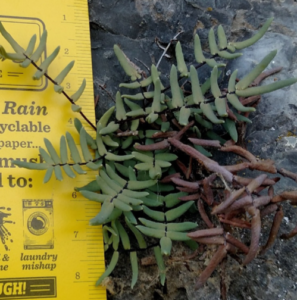
Pellaea glabella ssp. glabella
Though not globally rare, Pellaea glabella ssp. glabella or smooth cliffbrake, only has a few population in the state of Maryland. One of the largest populations in Maryland is found on a natural limestone cliff face in C&O Canal National Historical Park. The smooth cliffbrake has a sibling that looks almost identical, but its more common relative will grow out of man-made stone walls, where P. glabella ssp. glabella will not. It seems unlikely that anything can grow on a sheer cliff such as those that the smooth cliffbrake occupy, but climbing vines such as Japanese honeysuckle Lonicera japonica, Oriental bittersweet Celastrus occidentalis, English Ivy Hedera helix and wintercreeper Euonymus fortunei can creep their way into this special habitat. Pellaea glabella ssp. glabella is, like many of our rare plants, threatened by competition from invasive species.
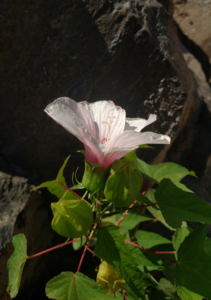
Hibiscus laevis
The halberd-leaved rosemallow is neither globally rare, nor easily overlooked. Hibiscus laevis can be found growing along the banks of the Potomac (or the Susquehanna) River, withstanding the drastically changing water levels. Hibiscus laevis seems abundant within our park, but in reality, our park covers most of its natural habitat and it is on the state watchlist. You will not find this plant growing far from the river, like its more common sibling. This plant can be distinguished by its halberd-shaped leaves. If you are a Lord of the Rings fan, think of the Leaves of Lorien brooches given to the members of the Fellowship of the Ring by Galadriel; these are halberd-shaped leaves.
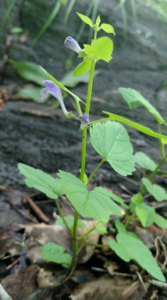
Scutellaria saxatilis
This species of Scutellaria (skullcap) is aptly named rock skullcap, as it grows in rocky areas. This plant will only grow in mature forests. The rock skullcap is one of a few state-listed skullcap found in the park, along with veined skullcap Scutllaria nervosa and heartleaf skullcap S. ovata. Scutellaria saxatilis, however, is on the global watchlist as well as being state-endangered. Its range does not extend north beyond Pennsylvania or south beyond Georgia/Alabama, and the farthest west documented occurrence for this plant is in Arkansas.
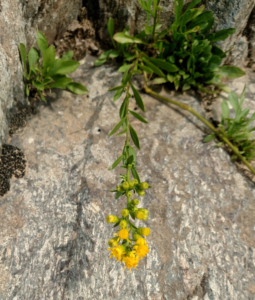
Solidago racemosa
Solidago racemosa, otherwise known as the racemose goldenrod or sticky goldenrod, is found in the Potomac Gorge, growing in cliff crevices bedded with shell deposits and sand. Though it might seem locally abundant in the Gorge, this unassumingly gorgeous flower is uncommon. The global status of this plant is under review, and our data helps to determine what ranking this plant might get, as well as future conservation actions. While currently on the global watchlist and becoming re-recognized not as a variety of another species but its own species, this plant is at risk because of the vulnerability of its habitat. If water levels are to rise above the rocks for an extended period of time, this plant may have nowhere to grow.





